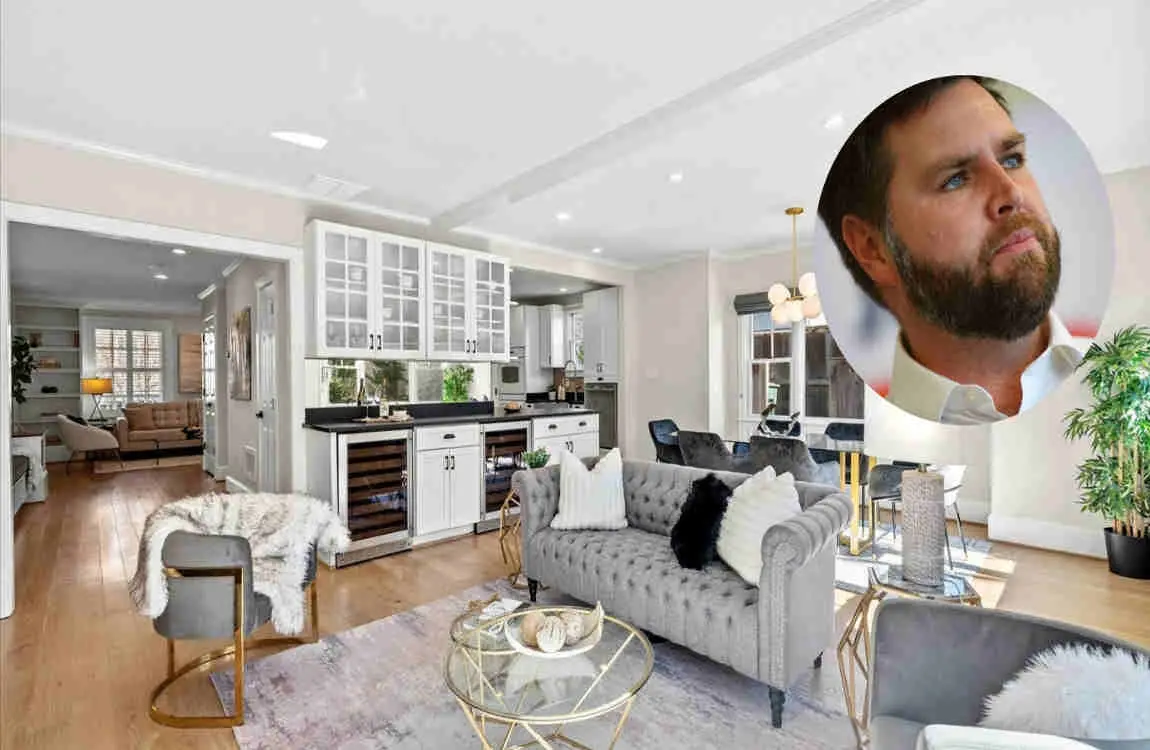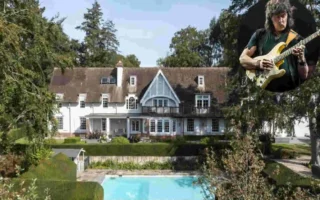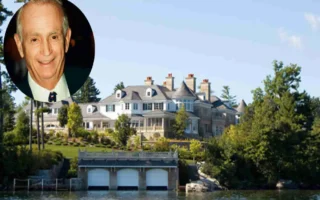When you think about the homes of prominent American figures, there’s often more to the story than just bricks and mortar. The JD Vance house in Cincinnati stands as a perfect example of how a residence can reveal a great deal about both the person who lives there and the community they’re part of. Whether you’re interested in architecture, history, or simply curious about the life of this bestselling author-turned-politician, exploring Vance’s Cincinnati home offers fascinating insights.
| Category | Details |
|---|---|
| Full Name | James David Vance (born James Donald Bowman) |
| Date of Birth | August 2, 1984 |
| Place of Birth | Middletown, Ohio |
| Education | Ohio State University (Bachelor’s), Yale Law School (JD) |
| Military Service | U.S. Marine Corps veteran, served in Iraq War as military journalist |
| Occupation | Politician, author, attorney, venture capitalist |
| Political Party | Republican |
| Current Position | 50th Vice President of the United States (since January 20, 2025) |
| Previous Position | U.S. Senator from Ohio (2023–2025) |
| Family | Married to Usha Chilukuri; father of three |
| Net Worth | Estimated around $3 million to $5 million (approximate based on public sources, varies) |
| Current Residence | Official Vice President’s residence at U.S. Naval Observatory, Washington, D.C. |
| Other Properties | Previously owned homes in Alexandria, Virginia and Cincinnati, Ohio |
| Notable Works | Author of bestselling memoir “Hillbilly Elegy” |
| Religion | Catholic |
JD Vance burst onto the national scene with his memoir “Hillbilly Elegy,” which painted a vivid picture of life in America’s Rust Belt. His journey from a troubled childhood in Middletown, Ohio, to Yale Law School and eventually to the halls of the U.S. Senate has captivated millions. But it’s his choice of residence – a historic home in Cincinnati – that reveals another layer of his story.
JD Vance: A Brief Background

Before we dive into the details of his Cincinnati residence, let’s take a moment to understand who JD Vance really is. Born James Donald Bowman in 1984, Vance grew up in Middletown, Ohio, experiencing firsthand the economic and social challenges that many Rust Belt communities face.
His path to prominence began with the publication of his 2016 memoir, “Hillbilly Elegy: A Memoir of a Family and Culture in Crisis.” The book became an instant bestseller, offering readers a window into the struggles of white working-class Americans. It sparked national conversations about poverty, addiction, and the American Dream.
After graduating from Yale Law School, Vance worked in venture capital, focusing on investments in companies that could bring jobs back to the Midwest. His business acumen and unique perspective on American society eventually led him into politics. In 2022, he was elected to the U.S. Senate, representing the state of Ohio.
His connection to Cincinnati runs deep. While he spent his early years in Middletown, about 30 miles north of Cincinnati, the Queen City became his chosen home as an adult. This decision wasn’t just practical – it was symbolic. Cincinnati represents both Ohio’s rich history and its potential for renewal, themes that resonate throughout Vance’s work and political messaging.
The public’s fascination with the JD Vance house stems from this broader interest in his life story. People want to understand how someone who wrote so movingly about poverty and struggle chooses to live now that he’s achieved success. His Cincinnati home offers clues to answering that question.
The Location and Architectural Style of JD Vance’s Cincinnati House
The Neighborhood Setting
| Category | Details |
|---|---|
| Residence Name | Number One Observatory Circle, the official Vice President’s residence |
| Address | United States Naval Observatory grounds, Washington, D.C. |
| Architectural Style | Queen Anne style |
| Architect | Leon E. Dessez |
| Year Built | 1893 |
| Size | Approximately 9,000 square feet |
| Number of Rooms | 33 rooms, includes both public and private spaces |
| Features | Heated outdoor pool, surrounded by dense greenery, forest-like setting, tranquil, near Massachusetts Avenue |
| History | Built for the Observatory superintendent, then Chief of Naval Operations residence; became official VP residence in 1974; first VP resident in 1977 (Walter Mondale) |
| Security | Located on 73-acre plot, secured government property |
| JD Vance Net Worth | Estimated between $3 million to $5 million |
| Personal Info | JD Vance: Vice President, author, former Marine, venture capitalist, conservative Republican |
| Current Residence Use | Official home and informal office for Vice President JD Vance |
The JD Vance house sits in one of Cincinnati’s most historically significant neighborhoods. This area, developed primarily in the late 19th and early 20th centuries, showcases the city’s golden age when it was known as the “Queen of the West.” Tree-lined streets and well-preserved period architecture create an atmosphere that feels both grand and welcoming.
Cincinnati’s historic neighborhoods tell the story of American urban development. The area where Vance chose to live reflects the city’s prosperity during the industrial boom, when prominent businesspeople and civic leaders built substantial homes that demonstrated their success while contributing to the community’s architectural legacy.
Architectural Features and Style
The house itself is a stunning example of Victorian-era architecture, though it incorporates elements from several architectural movements popular during Cincinnati’s building boom. The exterior features the characteristic ornate detailing that makes Victorian homes so distinctive:
- Decorative trim work that showcases the craftsmanship of the era
- Large windows are designed to flood interior spaces with natural light
- A prominent front porch that invites neighborhood interaction
- Original brick or stone work that has weathered beautifully over the decades
What makes this particular property special is its representation of Cincinnati’s architectural evolution. The city’s builders weren’t content to copy Eastern styles – they adapted them to local conditions and tastes, creating a unique regional variation that architecture enthusiasts still study today.
Historical Significance of the Choice
Vance’s decision to live in this particular style of home speaks volumes about his values and vision. By choosing a historic property rather than a modern mansion, he’s making a statement about the importance of preserving and honoring the past while working toward the future.
The neighborhood itself has seen cycles of prosperity, decline, and renewal – much like the communities Vance wrote about in “Hillbilly Elegy.” His presence here, along with that of other young professionals who’ve chosen historic Cincinnati neighborhoods, represents a new chapter in the stories of these areas.
History of the Property
Origins and Early Years
The JD Vance house was constructed during Cincinnati’s remarkable building boom of the late 1800s. During this period, the city experienced unprecedented growth, driven by its strategic location on the Ohio River and its emergence as a central hub for manufacturing.
The original construction reflected the optimism of the era. Skilled artisans, many of whom were recent immigrants, brought Old World techniques to the New World, creating homes that were both functional and aesthetically beautiful. Every detail, from the hand-carved woodwork to the carefully laid foundations, was built to last generations.
Previous Owners and Their Stories
Over the decades, this house has sheltered numerous families, each leaving its mark on the property. Early records suggest it was first owned by a prominent merchant family involved in Cincinnati’s river trade. As the city’s economy evolved, so did the inhabitants of the house.
During the early 20th century, the property was home to a succession of professionals – doctors, lawyers, and businesspeople who valued both its central location and its dignified appearance. Each family made subtle changes, updating systems while preserving the home’s essential character.
The Great Depression and subsequent decades brought challenges to many of Cincinnati’s historic neighborhoods. Some grand homes were divided into apartments, while others fell into disrepair. Fortunately, this particular property maintained its single-family status, though it required significant restoration work by the late 20th century.
Renovations and Restoration Efforts
When properties like the JD Vance house undergo restoration, it’s a delicate balance between preserving historical integrity and making the home suitable for modern living. The most recent renovations, completed before Vance’s purchase, focused on:
Restoration Historical Preservation, Modern Updates
Exterior: Original brick repointed, decorative elements restored. New roof with period-appropriate materials
Windows: Original window frames preserved. Energy-efficient glass installed
Interior Woodwork Hand-stripped and refinished original trim. Climate control systems hidden within existing structures
Kitchen & Baths Period-appropriate fixtures sourced, Modern plumbing and electrical systems
Foundation, Original stone foundation reinforced, Waterproofing and drainage improvements
Unique Historical Features
What makes this house particularly special are the original features that have survived through the decades. These include:
- Original hardwood floors that tell stories through their wear patterns
- Ornate plaster ceiling medallions that required specialized artisans to restore
- Built-in cabinetry that showcases the millwork skills of the original builders
- Period-appropriate hardware on doors and windows, much of it original to the house
These elements connect today’s inhabitants directly to the artisans who created them over a century ago. They’re tangible links to Cincinnati’s past and reminders of the care and skill that went into building these neighborhoods.
Inside the JD Vance House: Interior Overview

The Layout and Flow
Step inside the JD Vance house, and you immediately sense the thoughtful design that characterized Victorian-era homes. The entrance typically opens into a grand foyer, setting the tone for the rest of the luxury house. High ceilings create a sense of spaciousness that modern homes often struggle to replicate.
The traditional floor plan reflects the social customs of the era when the home was built. Formal rooms at the front of the house were designed for receiving guests, while family spaces occupied the rear of the house. This separation allowed for both public entertaining and private family life.
Key Rooms and Their Character
The living areas showcase the home’s historic charm while accommodating contemporary needs. Original fireplaces, often with intricately carved mantels, serve as focal points in principal rooms. These aren’t just decorative – they’re reminders of when such features were essential for keeping homes warm.
The dining room is likely to retain its formal character, featuring original built-in china cabinets and detailed crown molding. These spaces were designed for gathering, conversation, and celebration – purposes that remain unchanged to this day.
Modern updates blend seamlessly with historic elements. The kitchen, while equipped with contemporary appliances, maintains period-appropriate cabinetry and design elements. This careful balance ensures the home functions for 21st-century living without sacrificing its historical character.
Personal Touches and Lifestyle Reflections
While respecting the privacy of the current residents, it’s interesting to consider how the interior might reflect Vance’s journey and values. The choice to preserve historical elements rather than gut and modernize speaks to an appreciation for craftsmanship and continuity.
The home likely includes a study or library – essential for someone whose career has been built on writing and intellectual pursuits. These spaces, with their built-in bookcases and quiet atmosphere, connect to a long tradition of home libraries in such houses.
Preserved vs. Updated Elements
The most successful historic home restorations find ways to honor the past while embracing the present. In the JD Vance house, this might mean:
- Preserving original hardwood floors while adding modern area rugs for comfort
- Maintaining historic paint colors researched through careful analysis of original layers
- Updating heating and cooling systems while keeping radiators as decorative elements
- Installing modern lighting that complements rather than competes with original fixtures
The Cultural and Political Significance of the JD Vance House
A Symbol in Political Narrative
The JD Vance house has become more than just a private residence – it’s part of his public persona and political narrative. For someone who wrote extensively about the struggles of working-class Americans, the choice of home holds symbolic significance.
Living in a historic Cincinnati neighborhood rather than a gated suburban community sends a message about engagement with the broader community. It suggests a commitment to urban areas and their revitalization, themes that resonate with many voters concerned about the future of American cities.
Public Interest and Media Attention
The fascination with where public figures live isn’t new, but in Vance’s case, it carries particular weight. His memoir dealt honestly with issues of class, aspiration, and the American Dream. People naturally wonder how someone who achieved that dream chooses to live.
Media coverage of the house has generally focused on its historical significance rather than its luxury house. This framing aligns with Vance’s public image as someone who hasn’t forgotten his roots despite his success. The house represents achievement without ostentation – success that doesn’t require flaunting.
Connection to Cincinnati’s Identity
Cincinnati takes pride in its architectural heritage, and having prominent residents choose historic homes reinforces the city’s value. The JD Vance house becomes part of a larger narrative about Cincinnati’s renewal and its ability to attract and retain talented individuals.
For the local community, such high-profile residents in historic neighborhoods can inspire others to invest in the preservation of these areas. It demonstrates that these areas aren’t just museums but vibrant places where people build their lives and careers.
JD Vance House in Media and Public Tours
Media Coverage and Features
The JD Vance house has appeared in various media contexts, though always with appropriate respect for privacy. Architectural publications have noted it as an example of successful historic preservation, while political profiles sometimes mention it as part of Vance’s Ohio story.
Local Cincinnati media have covered the broader phenomenon of young professionals choosing historic neighborhoods, with Vance’s residence serving as a prominent example. This coverage helps promote the city’s historic districts and their ongoing revitalization.
Public Access and Community Events
While the house remains a private residence, Cincinnati’s historic neighborhoods often participate in organized tours and events. Annual home tours allow the public to appreciate historic architecture while raising funds for preservation efforts.
These events create opportunities for education about local history and architecture. Even if the JD Vance house isn’t directly included, its presence in the neighborhood adds interest and demonstrates that these historic areas remain relevant and desirable.
Community Engagement and Impact
The presence of high-profile residents in historic neighborhoods can have positive ripple effects:
- Increased interest in preservation efforts
- Economic benefits for local businesses
- Greater attention to neighborhood needs and improvements
- Inspiration for others to invest in historic properties
Where Does JD Vance Currently Live?
JD Vance currently resides at the official Vice President’s residence, located at the United States Naval Observatory in Washington, D.C. This residence is approximately 2.5 miles away from the White House. Before moving to the Naval Observatory, he had owned a home in Alexandria, Virginia, which he sold earlier in 2025.




